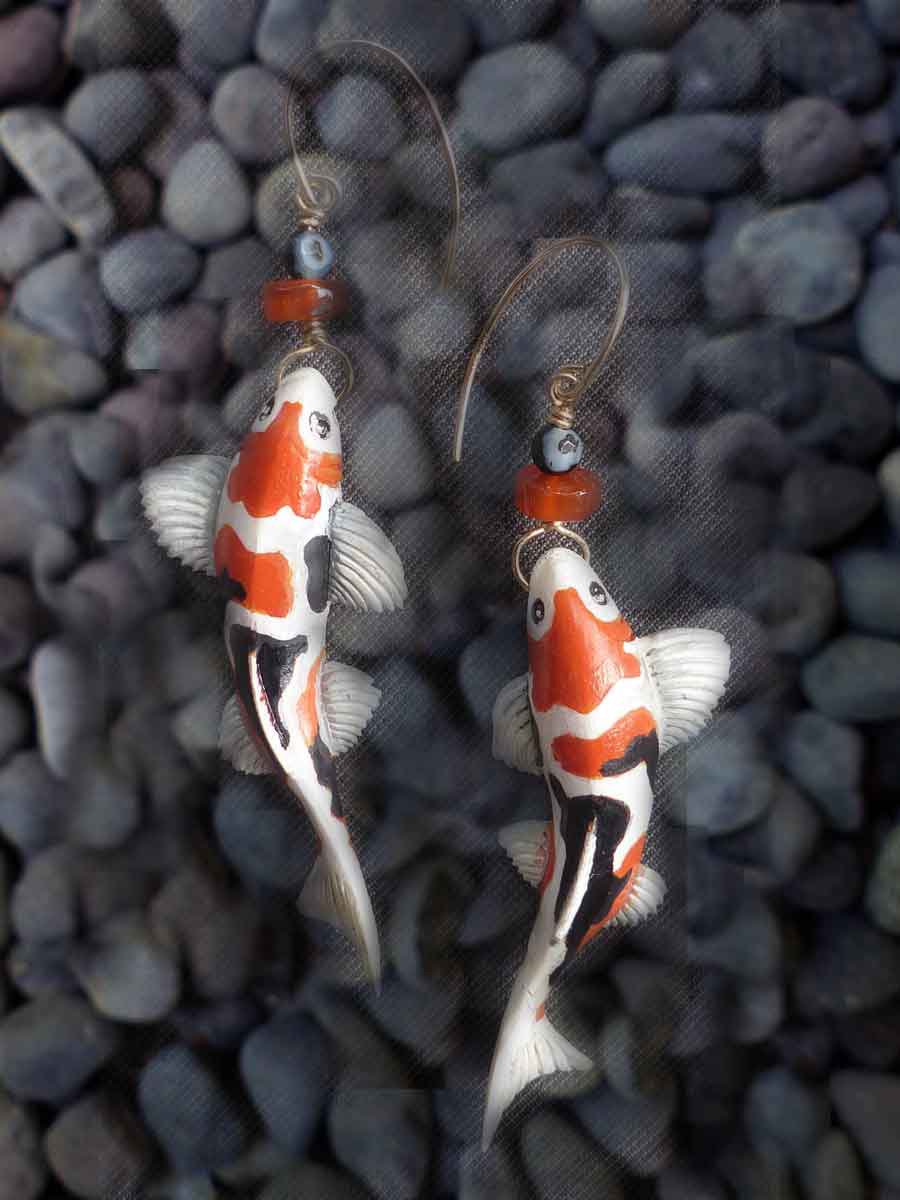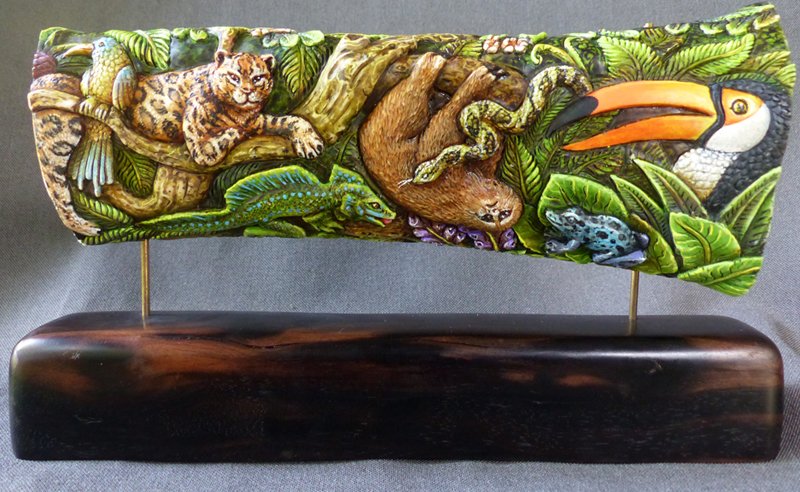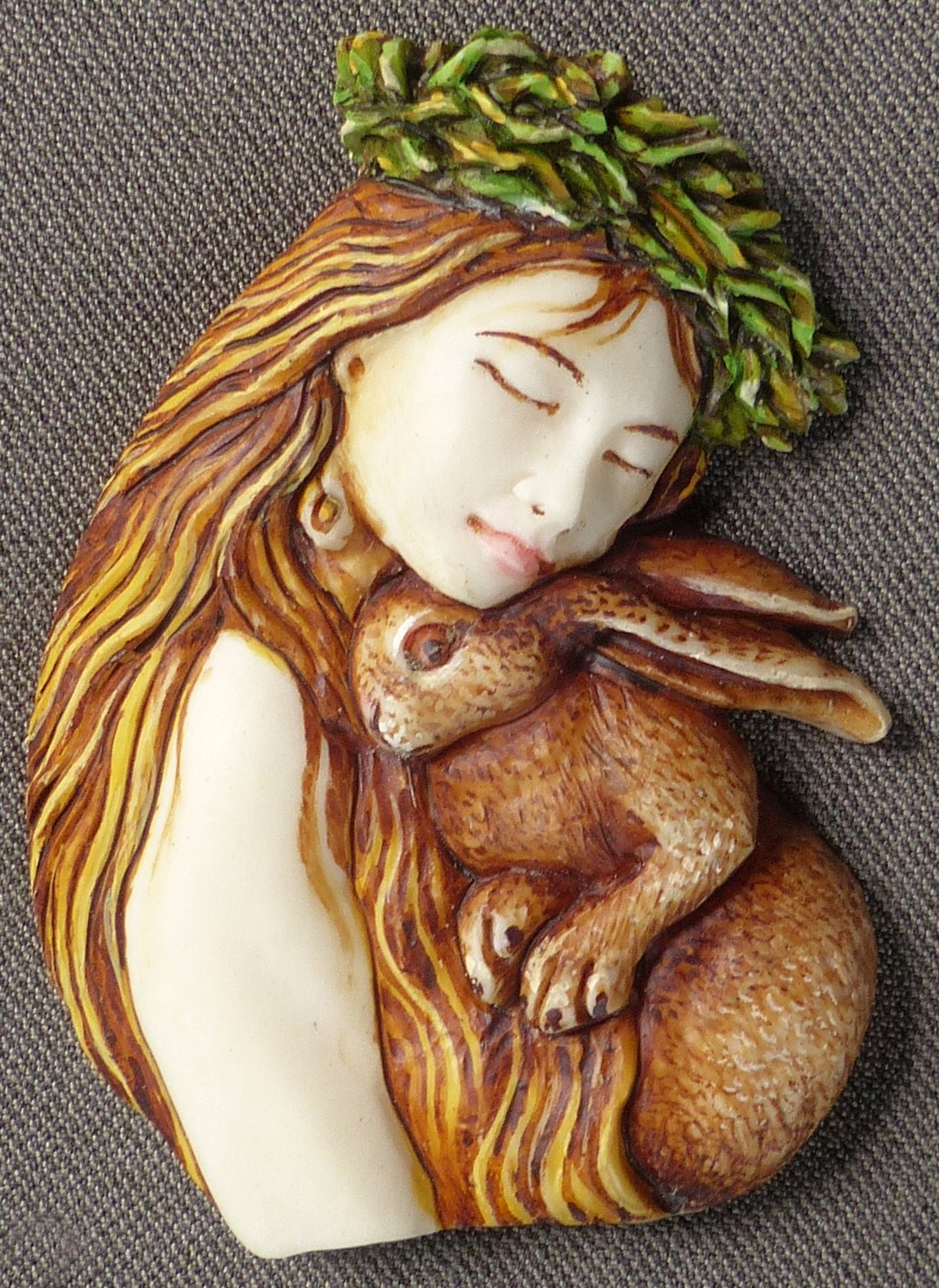Sometimes Adversity Leads to Invention
About six years ago, with a well-intentioned move to save our remaining magnificent elephants, several states made ALL ivories illegal. We, from the depths of our hearts, support the protection of these amazing animals.
The tragedy of the law is that it did not distinguish between our beloved elephant’s ivory and the tusks from Great Wooly Mammoths, extinct for 10,000 years. Since the beginning of ‘Susan Tereba – World on a String’ we have designed and employed many carvers to create our art from this exquisite ancient material.
These new laws necessitated asking our wholesale customers where they sell. If it was one of the States where mammoth tusk is illegal (California, Hawaii, New York, New Jersey, Illinois, Nevada, DC, New Hampshire, and Vermont), we informed them that they couldn’t resell the mammoth there. This was a large part of our customer base. It was a big blow.
Being an ‘up for a challenge’ person, while tempted, I opted not to curl up in the fetal position and go to sleep. I began to search for new exciting materials we could carve. I am responsible to keep our carvers and their families going. I also don’t want to see their talent, which has matured over the decades we have worked together, go to waste and either not have money for their families or see them, instead, turn to construction of new Bali ‘villas’ our planet does not need.
Bone
Bone ornaments have been carved for eons by various cultures. Perhaps the oldest bone carving is from 51,000 years ago. It was found in the Unicorn Cave in the Harz Mountains of central Germany, where many fossilized bones have been found. Centuries ago, they were believed to be from Unicorns and were ground up and used medicinally.
Indonesia, with its thriving beef industry, has bone readily available. We like that we are using a by-product that keeps our carvers using their talents. While bone doesn’t have the mystique of 10,000-year-old mammoth tusk, we enhance it with color for a unique and creative product.
Our bovine bones come from Java – the next island to the west of Bali in the Indonesian archipelago. They are boiled and cleaned of any remaining fat, meat, and marrow, and then set out to sun-dry for a few weeks so the material can be used for art, rather than be discarded.
Because the bones are hollow and thinner, we are limited in what we can carve from them compared to mammoth tusk which is much thicker. But they are perfect for pendants, earring pairs, beads, and bas relief sculptures.
Synergy
After I make the designs for our pieces, our expert carvers bring them to life. Sometimes we tea stain them to give them an antique look. Most of all, I like enhancing them with color.
We found a talented artist whose genre of work had gone out of fashion. With two children in school, he needed to make a living. It was a perfect pairing.
I choose the color palette for each piece and give it to the painter. He is free to use it as he sees fit. Somehow, he gets what I want almost every time and sometimes he does something even better. Back in our studio we seal the pieces with an acrylic sealer.
I love the synergy of working with our master craftspeople – something magical happens that is more than us as individuals.

These koi were inspired our busy koi pond.

A tribute to the diversity of the rainforest

There is something special in a cuddle

Double Blessings